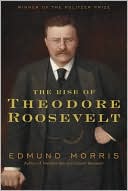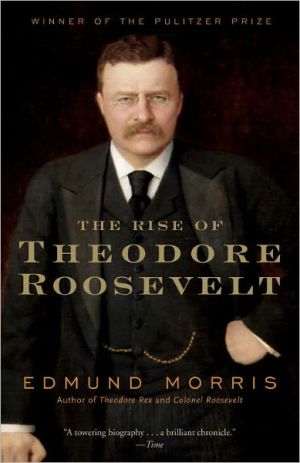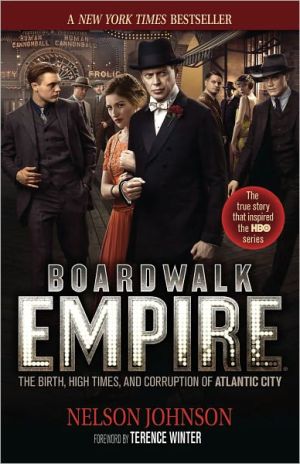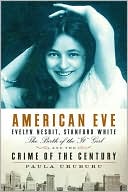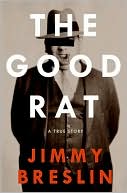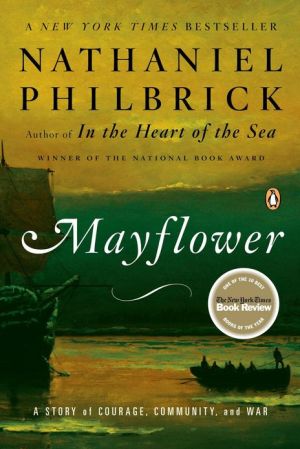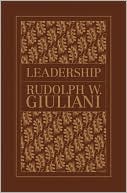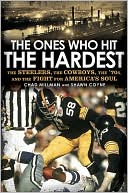Brotherhoods: The True Story of Two Cops Who Murdered for the Mafia
From inside the heart of the NYPD - The shattering police corruption scandal and the trial that stunned a city.\ Detective Stephen Caracappa achieved the distinguished rank of first grade detectve while under the hire of the Luchese crime family.\ Detective Louis Eppolito worked the heart of Brooklyn's mobland; he himself was the son of a Gambino crime family soldier.\ Detective William Oldham, the lead investigator on major organized-crime cases, quietly and relentlessly tracked Caracappa...
Search in google:
The Brotherhoods is the chilling chronicle of the shocking crimes of NYPD detectives Stephen Caracappa and Louis Eppolito, notorious rogue cops convicted in April 2006 of the ultimate form of police corruption—shielding their acts behind their badges while working for the mob. Their crimes included participation in the murders of at least eight men, kidnapping, and torture. "[O]ne of the most spectacular police corruption scandals in the city's history," proclaimed the New York Times in its front-page coverage of the verdict. The New York Times - Bryan Burrough The Brotherhoods is a perfectly fine book that could have been much, much better had the authors only known when to clam up. One suspects that within this overstuffed, ultradense 511-page anvil is a lean, nimble 275-page claw hammer yearning to swing free, a sequel to breezy underworld page-turners like Howard Blum's Gangland…For those willing to wade through it, The Brotherhoods has its rewards. The authors do a stellar job of portraying the Police Department as a dysfunctional bureaucracy, making us see how Caracappa, who worked in the elite Major Case Squad alongside Oldham, was a much bigger fish than Eppolito, a blowhard toiling in deepest Brooklyn. They are adept at conjuring organized crime's inbred world of social clubs and row houses; every cop in the book seems to have a cousin Joey "in the life," and vice versa. Rarely have Mafiosi seemed like such losers as they do here, obese men in track suits debating whom to kill once they finish their ziti.
PROLOGUE \ At twilight on the evening of March 9, 2005, William Oldham sat in a rental car in a parking lot off the Las Vegas Strip. Oldham, a twenty-year veteran New York Police Department detective now working as an investigator with the U.S. Attorney's Office in Brooklyn, had traveled across the country to arrest Stephen Caracappa and Louis Eppolito, two former NYPD detectives who had worked as hit men for the mafia in the eighties and early nineties. Across the street was Piero's, an upscale Italian restaurant decorated in a style known as Mob Vegas and frequented by local wiseguys as well as by Robert De Niro and Joe Pesci during the filming of Casino. Oldham watched the exterior of the single-story restaurant patiently — the red neon sign, the two attendants standing at the valet parking stand, the sun setting in the cloudless desert sky. Oldham could wait. He had been investigating Caracappa and Eppolito for seven years, the longest case of his career. Oldham was fifty-one years old, drank too much, depleted, done. For years no one else had worked the case against Detectives Caracappa and Eppolito. Oldham had refused to drop it. No investigation had demanded as much from him — time, tenacity, every trick of the trade he'd acquired during a lifetime spent chasing criminals. If this was Oldham's longest and best case, it was also likely to be his last.\ As Oldham watched, Caracappa and Eppolito pulled up to the valet parking area in an SUV with tinted windows, palmed the valet a few bucks, and walked toward the restaurant. Caracappa was dressed in a black pinstripe suit with wide lapels and a gold handkerchief tucked into the breast pocket. He walked with the self-conscious stride of a sixty-three-year-old mobbed-up dandy. Eppolito, a bodybuilder and a Mr. New York in his youth, was now nearly sixty and hugely overweight. He wore a tight-fitting double-breasted olive suit. He moved slowly but with a vestige of the strut he'd affected as a street cop. Oldham caught a glimpse of Eppolito's large gold-and-diamond pinkie ring with the NYPD detective shield embossed on it. Oldham hadn't seen either man in more than a decade, since he had worked with Detective Caracappa in the elite Major Case Squad. But Caracappa and Eppolito looked the same to him, just older and paler, dressed like aging gangsters. The two retired detectives had no idea they were about to be arrested. As far as they knew, they were going to a meeting with a Vegas accountant with underworld connections to talk about drug money to be used for financing a feature film about the mafia that Eppolito had written.\ Before Caracappa and Eppolito reached the restaurant's door, Oldham put his rental car into gear and lurched across the avenue, pulling up behind the SUV, blocking its escape. Three chase cars from the Drug Enforcement Administration screeched to a halt and blocked the driveway. Four DEA agents planted in the vestibule of Piero's rushed the two from the entrance. At the briefing that morning, when the protocol for the takedown was planned, Oldham had urged the agents to be careful. The targets were in poor health, Oldham said. Eppolito had undergone open-heart surgery weeks earlier. Caracappa had only one lung remaining. Oldham wanted to be sure the agents didn't scare Caracappa and Eppolito to death before they had a chance to go to jail. At Piero's, Eppolito and Caracappa were sprawled against a wall within seconds. Two DEA agents took Eppolito and spread his hands against the wall. Patting him down, they found a stainless-steel .45 semiautomatic tucked into his waistband. Eppolito was plainly dazed and disoriented. Caracappa, the tougher of the two, was impassive as he raised his arms above his head and turned in a circle. Oldham went for Caracappa's ankle, where Oldham knew from their time together in the NYPD he kept a pistol.\ "It's been a long time coming," one of the DEA agents said to Eppolito.\ "Yes, it has," Eppolito replied.\ The supervising DEA agent began to recite the charges against Caracappa and Eppolito, a formality Oldham had never heard before. He had made hundreds of arrests over the years, a number of them involving some of the most dangerous criminals in the country, but he had never experienced anything like this takedown. There was a theatrical aspect to it, the submachine guns, the dozen agents now swarming Piero's, the elaborate radio communications. The federal agents were triumphant, thrilled to be part of the arrest of the two dirtiest cops in the history of the NYPD. But Oldham had worked on the case far too long to feel elation. As a detective, he loved the chase. Capture brought out more complex feelings. Caracappa and Eppolito were "Steve" and "Louie" to Oldham — fellow NYPD detectives, no matter the crimes they had committed. Now he watched the two being led away by federal agents.\ As headlines around the world reported the next day, the two "Mafia Cops" were killers who had used their detective shields to facilitate their crimes. Caracappa and Eppolito were indicted on eight counts of murder, as well as conspiracy to murder, attempted murder, obstruction of justice, kidnapping conspiracy, witness tampering, bribery, money laundering, and drug trafficking. The allegations defied belief. The detectives had been on the payroll of the mafia for more than ten years. Witnesses, cooperators, mobsters, and innocents had been murdered as a result of their criminal actions. Detectives Caracappa and Eppolito weren't beat cops. Caracappa had been one of the leading detectives in the forty-thousand-strong NYPD. He was an authority on organized crime, and had been assigned to the Organized Crime Homicide Unit. Amazingly, audaciously, he had been the self-appointed detective in charge of gathering intelligence and monitoring the activities of the Luchese crime family — the very family for whom he secretly worked. Eppolito, a former detective in the 62nd and 63rd Precincts in mob-dominated sections of Brooklyn, claimed to be the eleventh most decorated cop in the history of the force. He was also the son of a Gambino "made man" and wore the heavy gold jewelry of a wiseguy while he was a detective. Eppolito had been accused and found not guilty in 1984 of providing police files to a Gambino capo under investigation — an experience Eppolito described in detail in Mafia Cop, the book he wrote after retiring from the NYPD. For decades Eppolito flaunted his association with organized crime, proclaimed his innocence, and defended the honor of cosa nostra. Eppolito had even played a bit role as a mobster in the movie GoodFellas before attempting to make a career as an actor and writer specializing in mob tales.\ The case against Caracappa and Eppolito dated back more than a decade. The investigation Oldham led had proven to be a complex weave of dogged detective work, patience, luck, and finally the persuasion of a criminal mastermind to turn against the two cops he "ran" for the mafia. Finding proof was maddening and irresistible — evidence always seemed close enough to touch but just out of reach. Suspicions about the cops first crystallized in the spring of 1994 when Luchese underboss Anthony "Gaspipe" Casso "flipped" and started to cooperate with the federal government while in custody awaiting trial on multiple murder and racketeering counts. Casso explained the deal he had struck with Detectives Caracappa and Eppolito. In return for a "pad" of $4,000 a month, Casso told FBI agents and prosecutors, the two NYPD detectives had provided him information on law enforcement investigations and informants. Casso explained that he had also hired Caracappa and Eppolito as hit men, ultimately paying them more than $350,000 in total on behalf of the Luchese crime family. The money was paid through a go-between, a millionaire mob associate named Burton Kaplan. "The cops," as they were known to the leadership of the Luchese family, gave up snitches, tipped off raids, and shared the most sensitive police intelligence with the mob. Casso called Detectives Caracappa and Eppolito his "crystal ball" because they could foretell the future: who was informing, who was going to be arrested and indicted, who needed to be killed.\ The allegations appeared in the New York tabloids in 1994, and became infamous in law enforcement circles. It was widely known throughout the NYPD that there had been leaks in a large number of organized crime investigations over the years. The problem was endemic, and deadly. The suspicions divided the department. Speculation circulated in all quarters about who might be responsible for the leaks. Theories ran the gamut, from mailroom employees in headquarters to detective squad commanders on Staten Island. Some detectives thought Caracappa or Eppolito were guilty. Some refused to believe that any of their brother officers would commit such crimes. Like many other cops at the time, Oldham assumed justice would be sure for Detectives Caracappa and Eppolito. Yet year after year, no charges were brought. Oldham watched as cases were started and abandoned. Incredibly, there were no methodical investigations of Casso's allegations — not by the FBI, the U.S. Attorney's Office in New York, or the NYPD itself.\ Detectives Caracappa and Eppolito eventually retired to Las Vegas, to homes across the street from each other on a quiet cul-de-sac in a gated community — each under the watchful gaze of the other.\ They had appeared to have gotten away with murder — they had "skated."\ Finally in 1997, Oldham took up the case himself, figuring that if he didn't pursue Caracappa and Eppolito no one would. Working alone, for the most part, he gathered evidence and interviewed witnesses and chased down leads. Within months he was convinced that Caracappa and Eppolito were guilty. But there was a difference between knowing "the cops" were guilty and being able to prove it beyond a reasonable doubt. The case held many mysteries. How did Detectives Caracappa and Eppolito operate? Why did the FBI never bring charges? Gaspipe Casso was a psychopath and a professional killer, but did that mean he was a liar? How could Oldham convince Burton Kaplan, serving a long stretch in federal prison on a drug conviction, to cooperate? For years Oldham accumulated evidence, storing it in cardboard boxes stacked in the corner of his office. The boxes were filled with murder files and arrest records and a beaten-up copy of Mafia Cop. Tapes of prison telephone calls and surveillance videos were stored in the boxes, as well as thousands of pages of confessions of wiseguys who had flipped and become witnesses for the government — men with names like "Fat Pete" Chiodo, and "Little Al" D'Arco. Each document was potentially essential to solving the enormous puzzle — but a piece was still missing.\ When Oldham retired from the NYPD in the aftermath of the attacks of September 11, 2001, he took his files with him to his new job with the U.S. Department of Justice. Oldham was now an investigator in the Violent Criminal Enterprise and Terrorism unit. He was one of the most senior and seasoned law enforcement investigators in the country, with the freedom to pursue cases he thought worthwhile. Oldham worked on domestic and international organized criminal conspiracies — all the while quietly continuing his long-term investigation of Caracappa and Eppolito.\ Finally, in the spring of 2004, a small group of detectives and investigators, experienced in Brooklyn and most retired or nearly retired, came together to work on the investigation. Oldham called them "the cadre." They all had a personal connection to the case. They knew Detectives Caracappa and Eppolito, or their victims. The men in the cadre belonged to the generation of New York City law enforcement betrayed by their brother detectives in the most profound way possible. They were determined to see that justice was done. All of the voluminous information Oldham had gathered over the years was examined anew. More evidence was uncovered. Compelling connections between "the cops" and long-forgotten murders were unearthed. Even with the accumulated facts, Oldham knew the case needed someone inside the conspiracy to describe how it had really worked. He needed a cooperator to take the disparate strands of the case and pull them together. He needed a storyteller.\ Oldham got one. The arrests of Caracappa and Eppolito soon followed. A year later their trial was held in a courtroom on the fourth floor of the federal courthouse in Brooklyn. Detectives Eppolito and Caracappa protested their innocence. Press from around the world gathered to watch two famous New York City defense lawyers try to match wits with federal prosecutors and expose holes in the government's case. For a month, NYPD detectives and federal agents testified, as did wiseguys, wannabes, parking lot attendants, a crooked accountant, Eppolito's former mistress, a defense attorney, and Burton Kaplan, the man code-named "The Eagle" by Caracappa and Eppolito. On April 6, 2006, the jury read its verdict aloud in court: guilty on all counts.\ This book is the inside account of the successful investigation Oldham led into the worst corruption case in the history of the NYPD. It is also an account of the last great mob conspiracy. It is a tale that goes to the hearts of two brotherhoods — the police and the mafia — and the two cops who belonged to both.\ Copyright © 2006 by Guy Lawson and William Oldham
CHARACTERSPROLOGUECHAPTER ONETHE HOOKCHAPTER TWOTHE PRINCE OF DARKNESSCHAPTER THREESNITCHES AND LEAKSCHAPTER FOURTHE CRYSTAL BALLCHAPTER FIVEMOBLANDCHAPTER SIX"GODFATHERS OF THE NYPD"CHAPTER SEVENTHE AMAZING LIFE AND TIMES OF "GASPIPE" CASSOCHAPTER EIGHTQUEEN FOR A DAYCHAPTER NINEDOWNTOWN BURTCHAPTER TENEAGLE ON THE LAMCHAPTER ELEVENOFF THE BOOKSCHAPTER TWELVETHE CADRECHAPTER THIRTEENFLIPPING BURTCHAPTER FOURTEENMOB VEGASCHAPTER FIFTEENTHE CIRCUS COMES TO BROOKLYNCHAPTER SIXTEENTRIAL FOR THE AGESCHAPTER SEVENTEENCORROBORATIONCHAPTER EIGHTEENTHE RULE OF LAWACKNOWLEDGMENTS
\ Bryan BurroughThe Brotherhoods is a perfectly fine book that could have been much, much better had the authors only known when to clam up. One suspects that within this overstuffed, ultradense 511-page anvil is a lean, nimble 275-page claw hammer yearning to swing free, a sequel to breezy underworld page-turners like Howard Blum's Gangland…For those willing to wade through it, The Brotherhoods has its rewards. The authors do a stellar job of portraying the Police Department as a dysfunctional bureaucracy, making us see how Caracappa, who worked in the elite Major Case Squad alongside Oldham, was a much bigger fish than Eppolito, a blowhard toiling in deepest Brooklyn. They are adept at conjuring organized crime's inbred world of social clubs and row houses; every cop in the book seems to have a cousin Joey "in the life," and vice versa. Rarely have Mafiosi seemed like such losers as they do here, obese men in track suits debating whom to kill once they finish their ziti.\ —The New York Times\ \ \ \ \ Publishers WeeklyHearing award-winning audio veteran Hill deadpan his way through a no-nonsense New York street accent through the cast of characters (Charlie "Flounderhead" Visconti is one of them), you might think you're listening to a Woody Allen routine or a Sopranostakeoff. But this is serious stuff—a solid and exciting audio version of journalist Lawson's and top anticrime detective Oldham's book on the headline-making trial of Louis Eppolito and Stephen Caracappa, two retired cops who were convicted of assisting the Mafia during their long careers with the NYPD. They were charged with providing information to mobsters and even killing for cash. The trial became even more sensational when an honest judge threw the case out of court because the evidence hadn't been collected correctly. Fiction writers couldn't make this stuff believable, but Lawson and Oldham pull it off in style. Simultaneous release with the Scribner hardcover (Reviews, Nov. 27). (Jan.)\ Copyright 2007 Reed Business Information\ \

